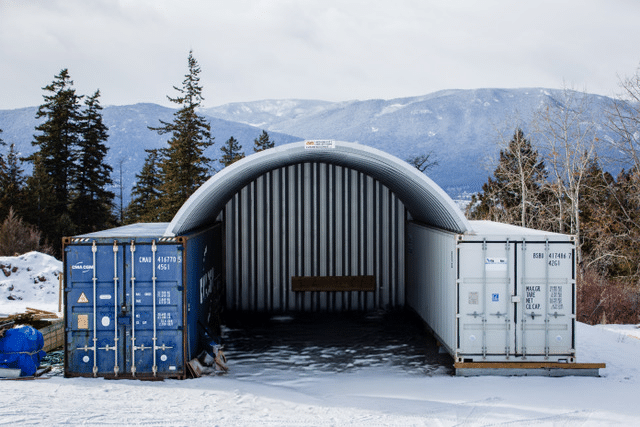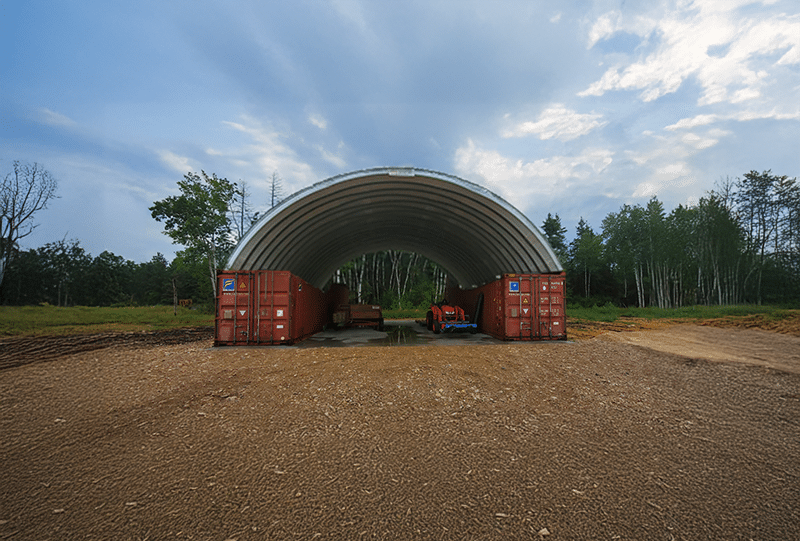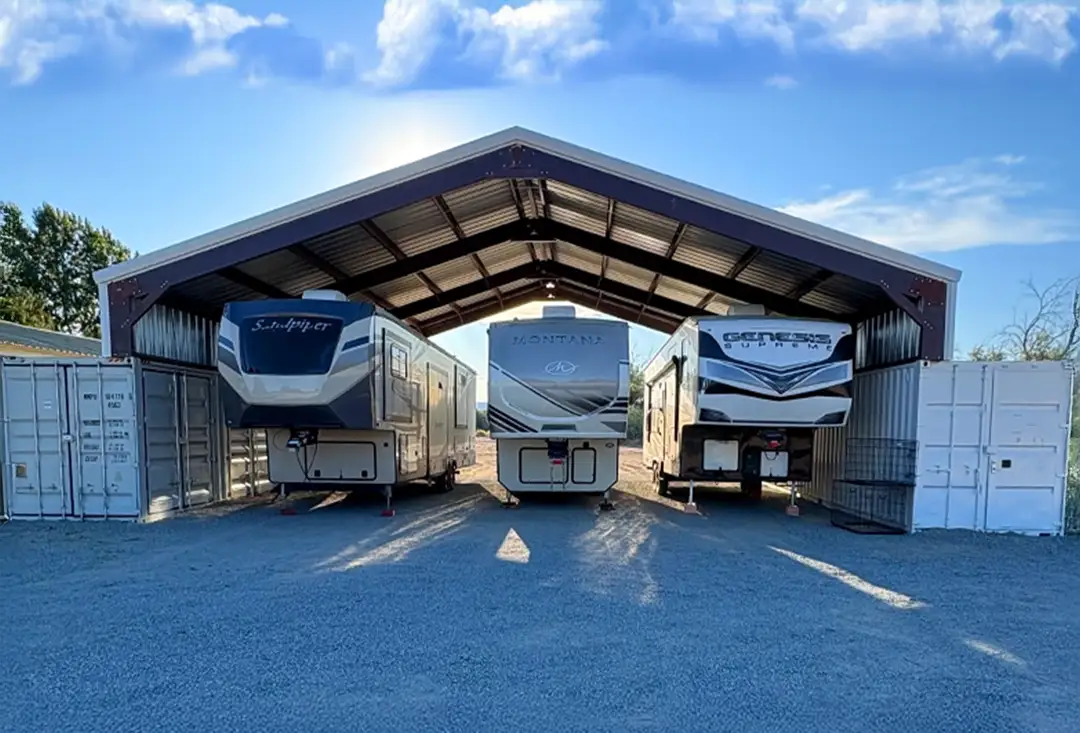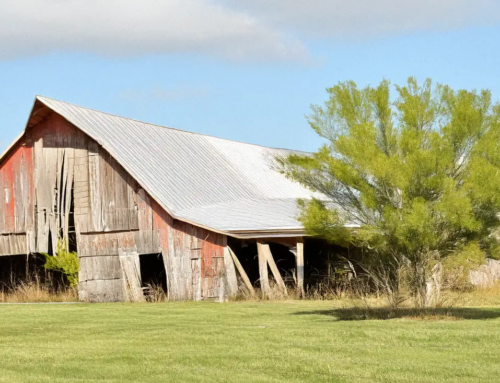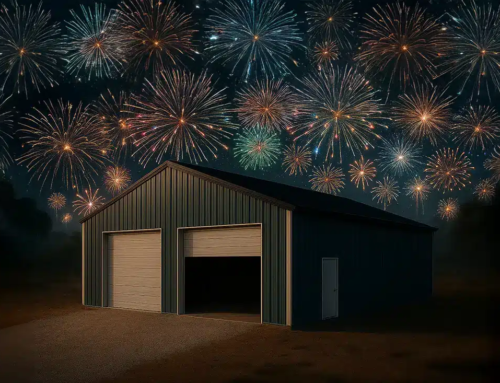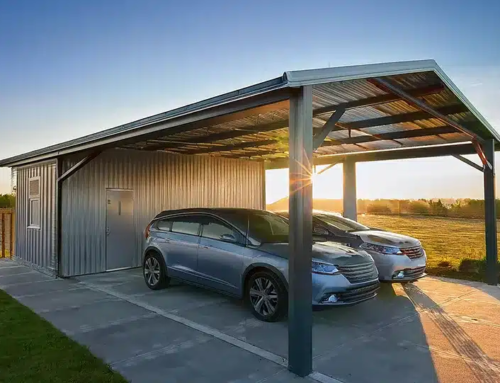Steel Container Cover Mounting Options:
Inside vs Outside Mount – The Great Debate
If you’ve already got a pair of shipping containers on your property and you’re ready to add a steel container cover, you’ve probably come across the big question: inside mount or outside mount? These are the two basic steel container cover mounting options that spark many a heated debate.
It’s one of the most common design decisions we see customers wrestling with, and depending on who you ask, you’ll get an earful about why one is better than the other. One person swears by the protection the outside mount gives the containers. The next person calls that overkill and claims inside mounts give you better value. Somewhere in between is the setup that’s right for you.
To break it down in a way that’s easy to picture, let’s imagine this scenario:
You’ve got two 8-foot-wide shipping containers set 30 feet apart. The span between them stays fixed at 30 feet, no matter which mounting option you choose. That’s our baseline.
Let’s walk through the pros and cons of each approach using that same setup as we review these steel container cover mounting options.
Option 1: Inside Mount
In this configuration, the container cover is installed on the inside edges of the containers. The arch or roof system is bolted to mounting plates welded or fastened on the top of the container walls. The total sheltered space is about 30 feet wide—the same as the space between your containers. This is by far the most common of the steel container cover mounting options.
Pros:
Cons:
Option 2: Outside Mount
Here, the roof system is mounted to the outer edges of the containers, giving the roofing structure a slightly wider overall width—usually around 46 feet total (to account for two 8-ft-wide containers + the 30 ft span between them). This is the less common of the two steel container cover mounting options, but it is gaining in popularity!
Pros:
Cons:
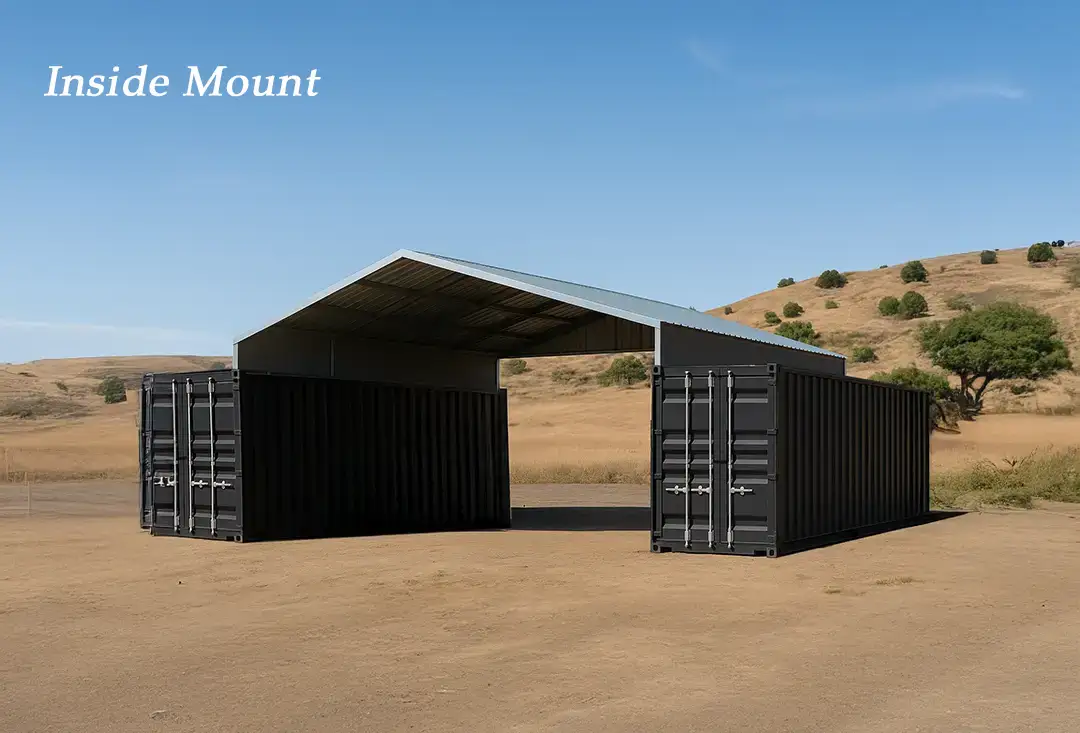
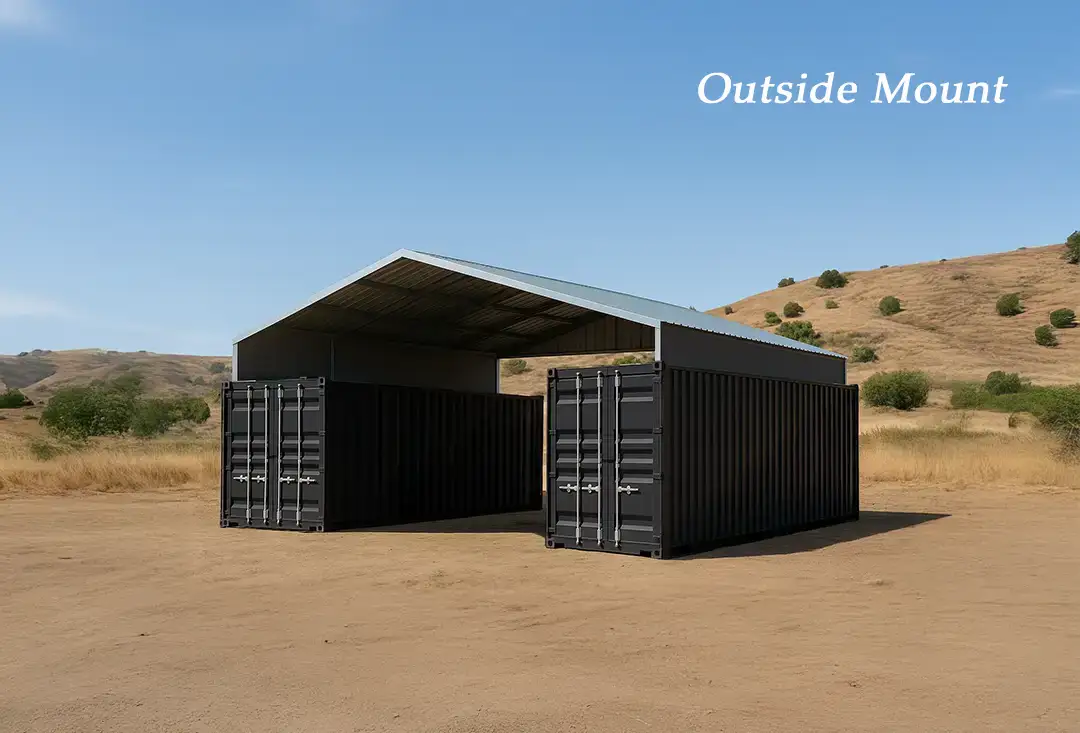
And then there’s the bigger picture…
Whichever one of the steel container cover mounting options you choose, it might have less to do with the roof design and more to do with your setup and your needs.
If you don’t already own shipping containers—or you’re planning to buy new ones just for this build—you might want to step back and consider whether a standalone steel building or a dedicated open-ended structure would be a better long-term solution. We touch on that in DIY Steel Container Cover Solutions for the Right Customer (Toro).
Also, if you’re still weighing what type of foundation to build on, check out Building on a Solid Base: What You Need to Know About Your Container Cover Foundation (Toro) for important prep considerations before you mount anything.
Want to get nerdy about container durability? We’ve got that covered too:
10+ Facts About Steel Shipping Containers (Future Buildings) goes deep into why these steel giants last as long as they do—and how to keep them in top shape.
And if you’ve heard some tall tales about what these covers can or can’t do, we suggest reading Debunking 3 Steel Container Cover Myths: What You Need to Know (Future Buildings) to get some clarity. All of these resources can help with your decision regarding which of the steel container cover mounting options is best for you project and budget.
So… which of the two steel container cover mounting options is right for you?
At the end of the day, it comes down to this:
Do you want to maximize useable ground space between your containers while keeping costs lower? Inside mount is a strong contender.
Do you want to protect your containers and get some bonus storage up top? Outside mount might be the better long-term investment.
Whichever route you choose, make sure it’s the one that fits your site, your stuff, and your style. And if you’re still not sure? We’ve seen every setup you can imagine—give us a call and we’ll help you weigh your options in plain language to help you select which one of the two steel container cover mounting options meets your needs best.
Ready to start? Got questions about starting your project? Reach out to our team—we’re happy to help you plan it from the bottom up.
👉 Click here to get a free quote from Toro Steel Buildings to get started today or call us at 1-877-870-8676.
Prefer a curved Quonset-style building/roofing solution? Check out our sister company Future Steel Buildings, for easy-to-assemble arch-style kits that are just as tough.
